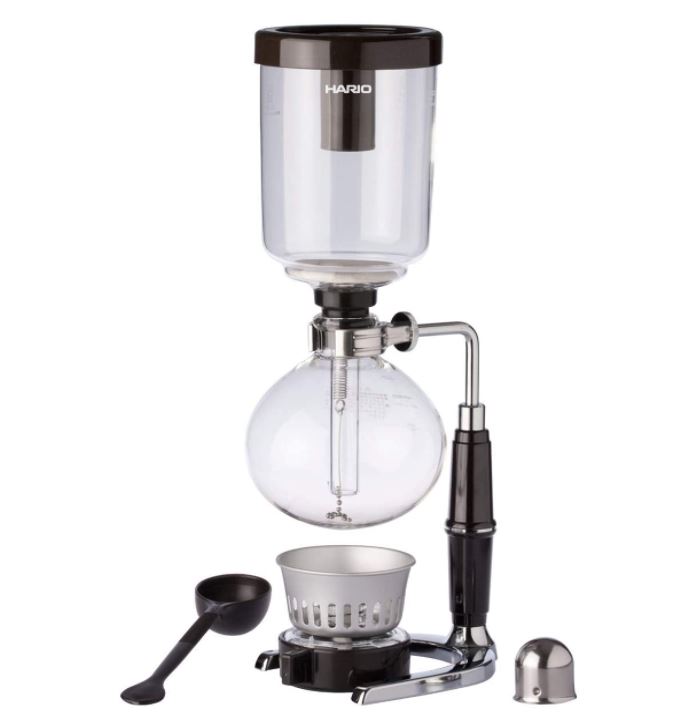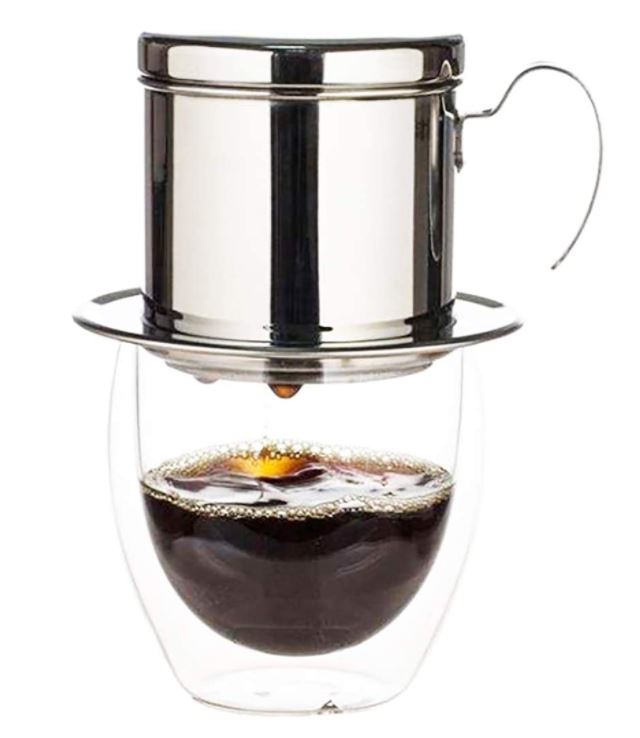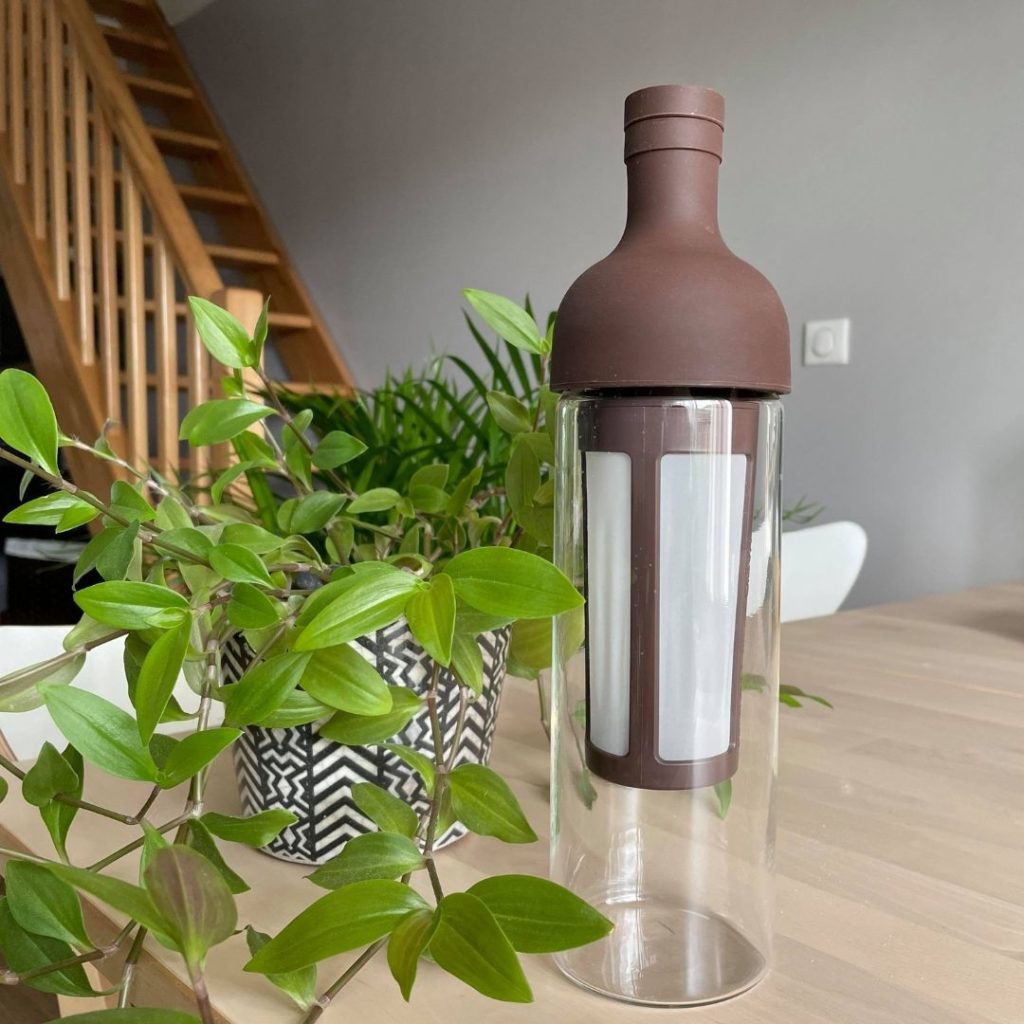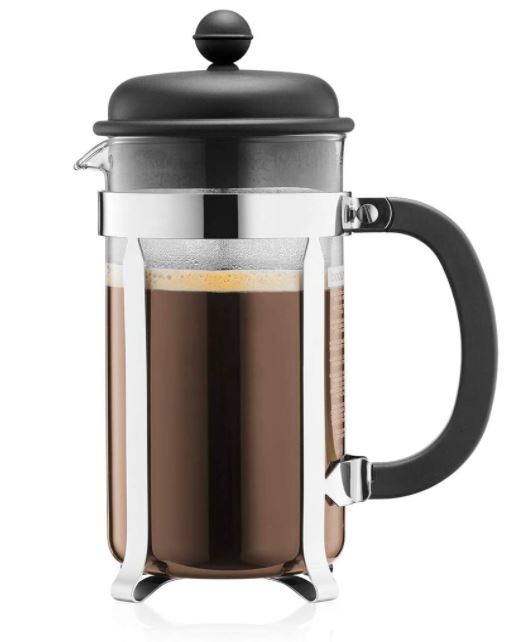Today, I suggest you embark on a journey! How to prepare your coffee? Here are five brewing methods you may not have suspected, five good reasons to drink coffee and five good reasons to travel in a cup. Each of these coffee makers will be the subject of a detailed article, so it's just a matter of spending a little time together traveling! 🙂 Let's find out together which coffee maker to choose.
ORIENTAL COFFEE says Turkish coffee
Yes, I said five extraction methods and not five recipes! But Arabic coffee has its own preparation. For that, you must bring an ibrik , and for the real adventurers: a hovoli .

The coffee, very finely ground, comes into direct contact with the water which is brought to the boil beforehand. You can add sugar or not, Turkish coffee is often accompanied by spices such as cinnamon or cardamom. I have already tasted Turkish coffee, but I have never prepared it, it obviously follows a very specific ritual!
To go further, you can bury your little copper cup filled with coffee in sand to cook it… for that we use a hovoli, a traditional coffee machine (it's the case to say it). There you are on top!
This preparation is also called Greek coffee!
VACUUM COFFEE MAKER – Berlin
Which coffee maker to choose? Undoubtedly the most aesthetic coffee maker and one of the purest gentle methods to extract your coffee. Apprentice chemist, listen carefully!

The water is placed in the lower globe below which a heat source is positioned. Once the water is brought to a boil, it evaporates… and therefore escapes into the upper globe. Once the water has infused the coffee, simply turn off the heat and the water, or rather your coffee, will fall back into the lower globe. Magic.
The vacuum coffee maker was invented in 1830 in Berlin but has undergone many developments and patents filed sometimes in France, sometimes in the USA...
PHIN or Vietnamese coffee
My favorite coffee maker! I admit, it's not necessarily the craziest extraction method to get the best from your coffee, but it suits me perfectly after a short period of learning. No doubt because I discovered the phin while traveling…

It's quite simply an aluminum coffee maker that sits on your cup, in which you place your 10 grams of coffee. You place a filter on top to avoid pouring the water directly on your grind: you just have to pour and wait 4 minutes.
A real Vietnamese coffee is most often prepared with a background of sweetened condensed milk in the cup. The coffee flows over it but does not mix, it is up to you to mix the two once you have tasted black coffee!
To enjoy the show, you'll need to use a glass mug! If someone asks me which coffee maker to choose , I answer the phin without hesitation for its simplicity and emotional attachment. Let's be clear, this is not the DNA of specialty coffee. 🙂 This is the DNA of the Nomadic Barista!
The COLD BREW – JAPAN
Very trendy these days! Cold brew is, like oriental coffee, a way of preparing coffee and does not directly refer to the extraction method.

Cold brew is cold brewed coffee. Cold infusion requires, the extraction can last 10, 15, 20 hours or even a little more! The coffee can be infused directly by macerating in water like the Hario bottle, there is also a so-called drop by drop extraction method! Your coffee infuses and flows, drop by drop, for 10 hours… some coffees lend themselves more to slow cold brewing than others.
You should know that in some parts of the world, drinking cold coffee is much more common than drinking it hot! A first experiment would be to let your coffee cool for a few minutes and then to hit it (pouring your coffee on a bed of ice cubes). If you like it, why not get down to business and try Cold Brew?
The Cold Brew comes to us from Japan, in Kyoto in the 17th century where “Kyoto-style” coffee was popularized, the real Cold Brew drop by drop. 😉
Which coffee maker to choose? The CAFETIÈRE A PISTON or french press
During my trip to Panama, I had the opportunity to do a coffee tasting as close as possible to the plantations. How to proceed ? Well… nothing could be simpler, just put your coffee in a cup (a coarse grind!), pour water over it, let it steep… voila. The grounds lay at the bottom of the cup.

I knew about free infusion for tea, I had never thought of it for coffee. It is however obvious: if you are brought to compare coffees between them for a tasting, to train your puck, if you seek to extract a maximum of profits from your coffee: the free infusion.
The French press is based on free brewing. It's a simple system that allows you to separate the grounds from your coffee, nothing more. If you have to start somewhere, it's here!
The French press was actually developed in France… but by an Italian! The first iteration appeared in 1929.
Which coffee maker to choose then? 🙂
References :
“Siphon” vacuum coffee maker – Hario
Cold Brew Bottles – Hario https://amzn.to/3zFuD2G

